

Shane O'Donoghue
2025 Nissan Ariya Nismo review: Quick drive
6 Days Ago

Design Contributor
Supercars are a wild breed. They attract the attention of petrolheads with their exotic looks, performance credentials, haunting sound and absurd nature.
Modern technology has made it possible to have extremely fast and powerful vehicles that are also easy to drive on a daily basis. However, evolution has taken away an important aspect of supercars – their untamed character.
It’s important for us and the future generations to have a clear image on which was the last “analogue” supercar to be produced. As you can imagine, the answer lies in the title and this wild vehicle coming from Stuttgart.
During the early ‘90s, Porsche withdrew from its role as a Formula 1 engine supplier while a brand new V10 was under development.
This motor found new life in the late ’90s when the company developed a brand new Le Mans prototype racer, but that project was cancelled too. Trying to find a good use for the orphaned V10, executives decided to use it on a flagship supercar with racing genes.
At the 2000 Paris motor show, Porsche stunned the motoring press and public with the unveiling of the Carrera GT concept. First of all it looked fantastic, but it also had the performance credentials to match its looks thanks to the dry-sump, race-bred naturally aspirated V10 positioned behind the two seater open top cabin.
The overwhelming response led Porsche to further develop the car for series production. a process that took 2.5 years.
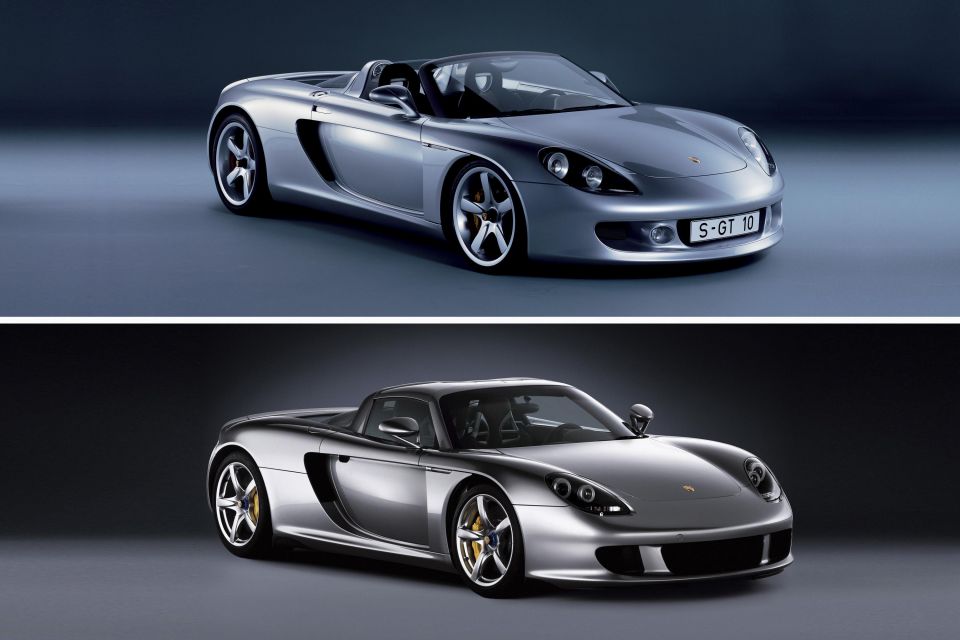
The production version of the Carrera GT debuted at the 2003 Geneva motor show. As promised, it retained most of the concept’s styling and technology, but every aspect was refined.
Porsche’s new flagship was based on a monocoque chassis made entirely of carbon-fibre reinforced polymer (CFRP). The mid-mounted, naturally aspirated V10 with a capacity of 5.7 litres produced 450kW of power and 590Nm of torque, which was more impressive than the concept car’s 5.5-litre unit (410kW).
Power was sent to the rear wheels exclusively through a rear-mounted six-speed manual gearbox, featuring a small-diameter Porsche Ceramic Composite Clutch that allowed for fast revving. The mixture was complete with a race-style pushrod suspension, active aerodynamics, and carbon ceramic brakes, all fitted as standard.
Performance was typical of the ‘00s supercars with a claimed 0-100 km/h acceleration of 3.9 seconds (it was even faster in reality) and a top speed exceeding the 330km/h mark. That meant the Carrera GT was Porsche’s fastest production car at the time, faster than the homologation special 911 GT1 Straßenversion (1996-1998).
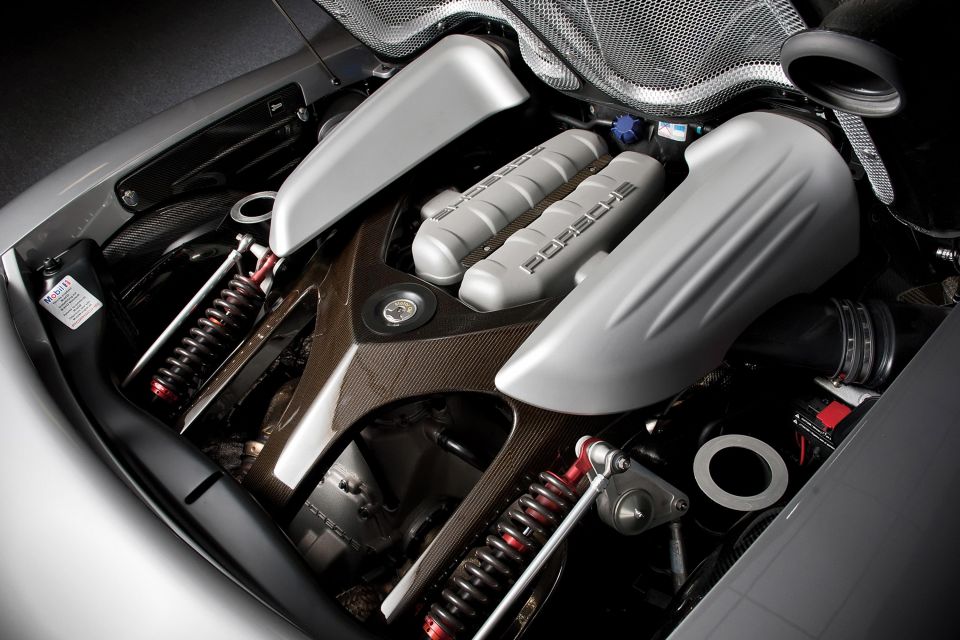
The man responsible for the design of the Porsche Carrera GT was Harm Lagaay. He worked for Porsche between 1971-1977 and returned as head of styling at the Development Centre Weissach between 1989-2004. From that position, the Dutch oversaw the design of all Porsche models launched during the ’90s and the early ’00s, contributing to the company’s growth and design heritage.
Besides the flagship Carrera GT which is considered the pinnacle of his career, Harm Lagaay was the brains behind the styling of the 924, 944, 968, 993, Boxster, Cayenne, and 996.
Other notable non-Porsche models in his biography include the quirky BMW Z1 roadster and a few more ordinary cars like the Ford Sierra and Escort III.
First of all, the purity of its exterior design was phenomenal. The Carrera GT was not built to make false promises. It was a street-legal race-bred monster, dressed in a beautiful athletic body without the need of exaggerations or decorative elements.
And all that with the sheer build quality, workmanship and surface finish associated with Porsche.
The mid-engined proportions were characterised by a long wheelbase, balanced overhangs, a long rear deck, and minimum external aerodynamic aids. The unique five-spoke magnesium centre-locking wheels (19-inch at the front and 20-inch at the rear) with colour-coding nuts, were the icing on the cake, complimenting the simplistic lines and clean curves of the car.


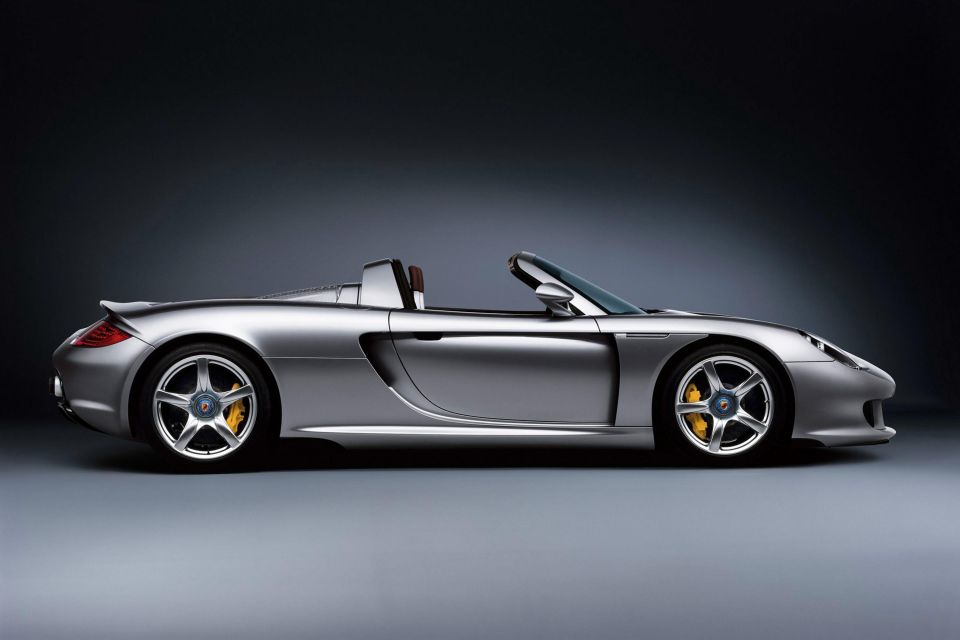
Besides the harmonic fenders that only slightly deviated from the almost straight belt line, a signature design element on the profile of the Carrera GT was the side air intakes.
Those openings framing the door were 100 per cent functional, guiding air through the sides and then upwards for optimal engine cooling. When seen from certain angles they looked quite small, but a three-quarter view revealed their size.
At the same time, the recessed part brought lightness to the overall design, with the centre portion of the door sitting on the same plane as the side windows. Between them, the pronounced part of the door panel connecting the front and rear fenders also served as a base for the exotic mirrors.
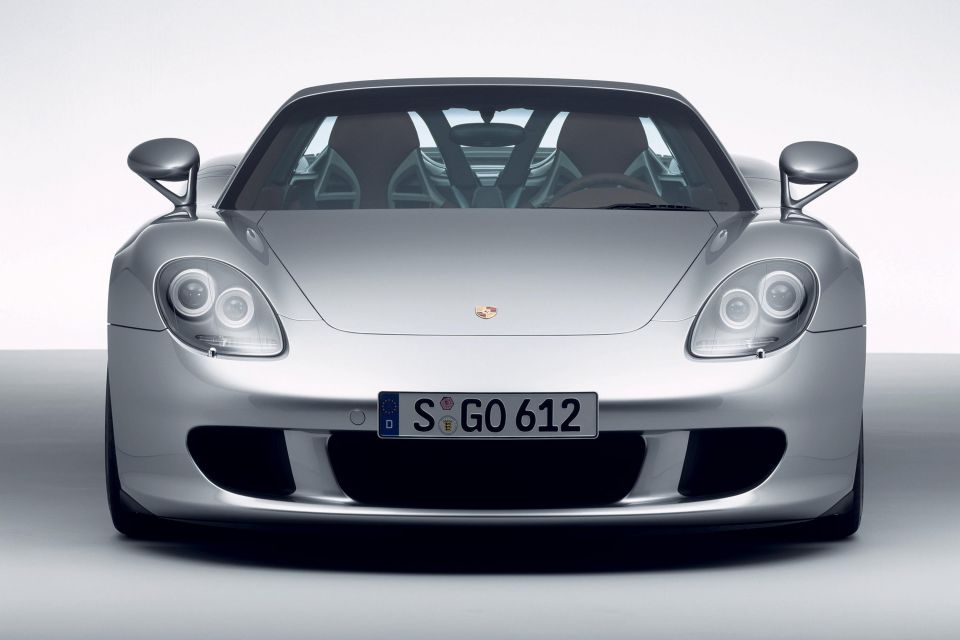


At the front, it’s hard to not fall in love with the sexy fenders sitting above the flat bonnet. The headlights were perfectly integrated in the body panels, with a shape inspired by the legendary 917 and other Le Mans-winning race cars.
In the Carrera GT they are just the right size, which is a little smaller than those of the concept car, and featured double circular units on a dark background with separate turn signals.
The clean surfacing on the curved low nose is typical of Porsche. Below, the front bumper features three air intakes with simple dividers, all fitted in a single elongated shape, and a neatly integrated splitter.
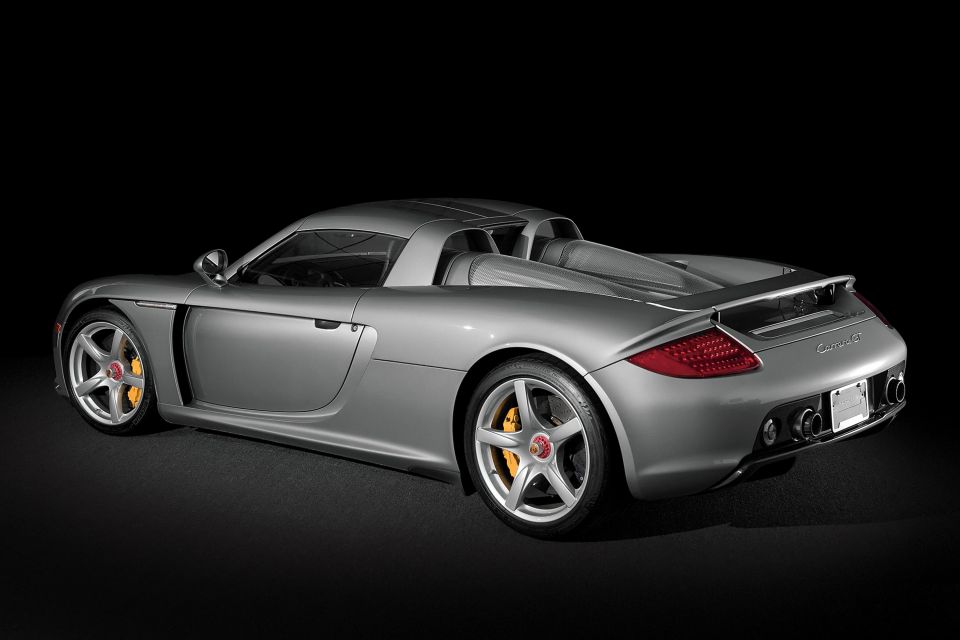
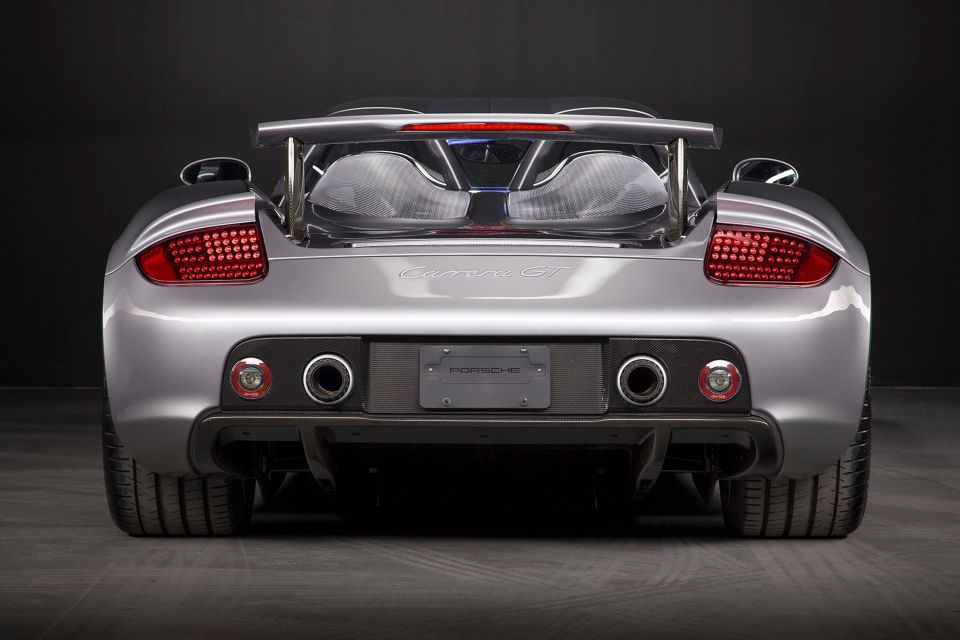
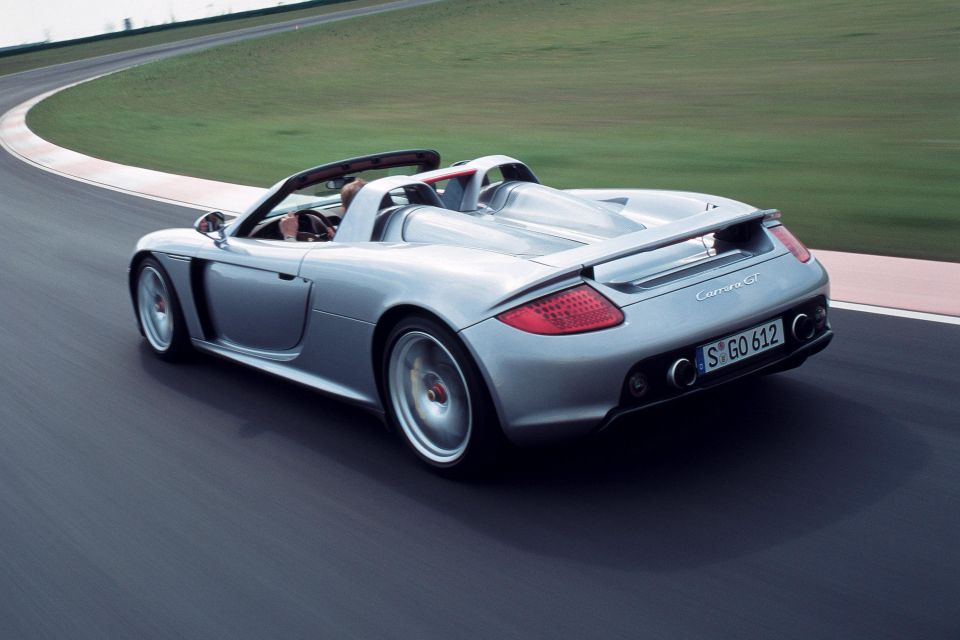
At the back, the eye was drawn by the double bulges fading away on the long rear deck, and the large gap between them and the roofline. This was more evident when the two-part carbon fibre removable targa roof was fitted, creating a sharp drop for the vertical rear windshield, putting emphasis on the strong arcs behind the headrests.
As you could guess, under the sculpted perforated stainless steel sheets we could see the air vents for the V10.
The rear wing was neatly integrated with the line above the taillights, but it also had a little trick. The middle part automatically deployed at speeds over 120 km/h, where more downforce was needed, a process that could also be operated manually through a dedicated button on the centre console.
The all-red taillights with numerous LED units looked like a continuation of the rear fenders, retaining an almost identical shape to the concept car. Their incline matched the curves of the tail where the Carrera GT lettering proudly sat.
Below, the bumper had a single opening housing the numberplate, two round tailpipes inspired by rocket thrusters, and additional circular light units integrating the reverse light, fog light and ring reflectors.
Last but not least, the large carbon-fibre diffuser revealed that Porsche engineers did a lot of work in keeping the car glued to the ground at high speeds, with an aerodynamic design of the floor.
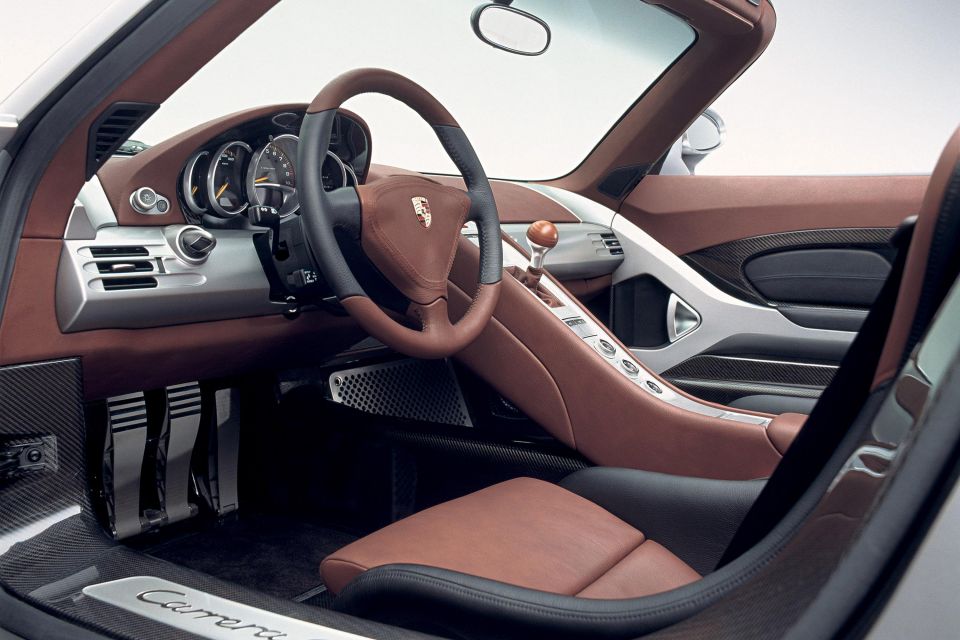
Inside, the heavily inclined and slim centre console was another unique feature of the Carrera GT. The birchwood gear knob (also available in carbon fibre) for the six-speed manual transmission was a tasteful tribute to the 917, and a special highlight.
It was highly positioned to be as close as possible to the steering wheel, allowing for faster gear changes.
The aluminum on the dashboard, centre console, pedals, footrests, and side steps made a beautiful contrast with the exposed parts of the carbon-fibre monocoque, and the high-quality leather upholstery.
For cost cutting reasons, the three spoke steering wheel was borrowed from the 996, like the analog instrument cluster with five circular gauges in perspective, replacing the digital unit of the concept car.
To the contrary, the ultra-light bucket seats with carbon-kevlar shells, modular backrests and integrated headrests were unique to the Carrera GT, as was the custom luggage set for extra practicality.
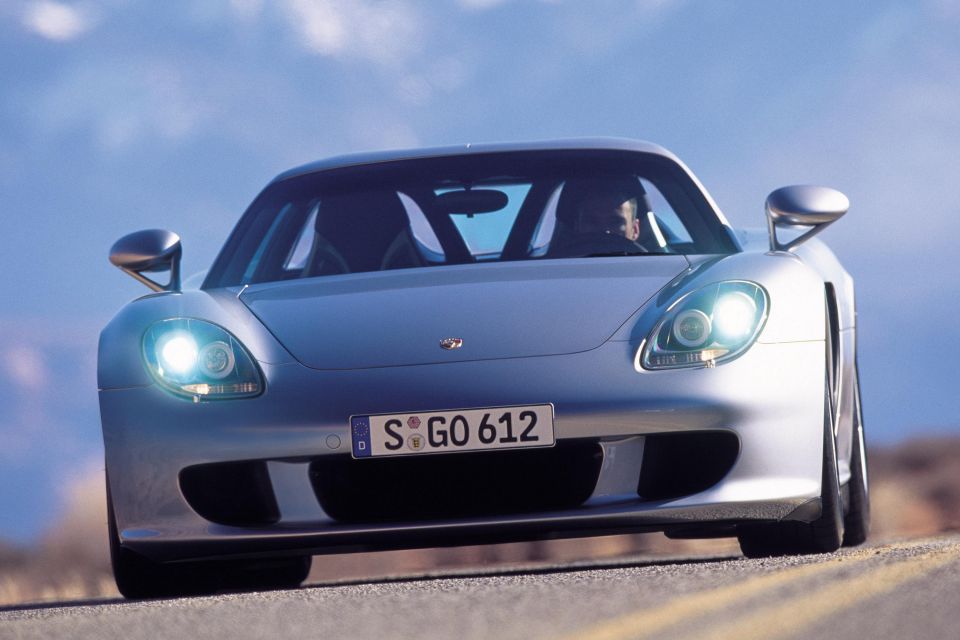
Porsche initially planned to sell 1500 units of the Carrera GT, which was its answer to rival supercars like the Ferrari Enzo (2002) and the Mercedes-Benz SLR McLaren (2003).
The US$440,000 price tag might have seemed too much for a Porsche at the time, leading to less than ideal sales performance. Citing airbag compliance issues, Porsche announced it would end their flagship’s production run in 2006, after a total of 1270 cars came out of the Leipzig factory.
Today it is believed that less than 1070 units survive, as many owners have totalled their Carrera GT in accidents due to the infamous driving behaviour associated with the lack of electronic aids and the Michelin tyres (later on they were replaced with brand new custom tires by Michelin).
After a dip during the outburst of the global economic crisis, the desirability of the Carrera GT’s has been steadily rising at the used market, with prices steadily approaching the UA$1 million mark.
As for the design language introduced by the Carrera GT, it proved to be a strong influence for the 987 generation Boxster (2004) and Cayman (2005). An evolution of the same theme can also be found on the Carrera GT’s successor – the hybrid 918 Spyder (2013), which was a proud member of the “Holy Trinity”, alongside the LaFerrari and the McLaren P1 hypercars.
Something similar can be said for the 981 (2012) and 982 (2016) generations of the Boxster and Cayman that are still offered today and feature many aspects of the Carrera GT.
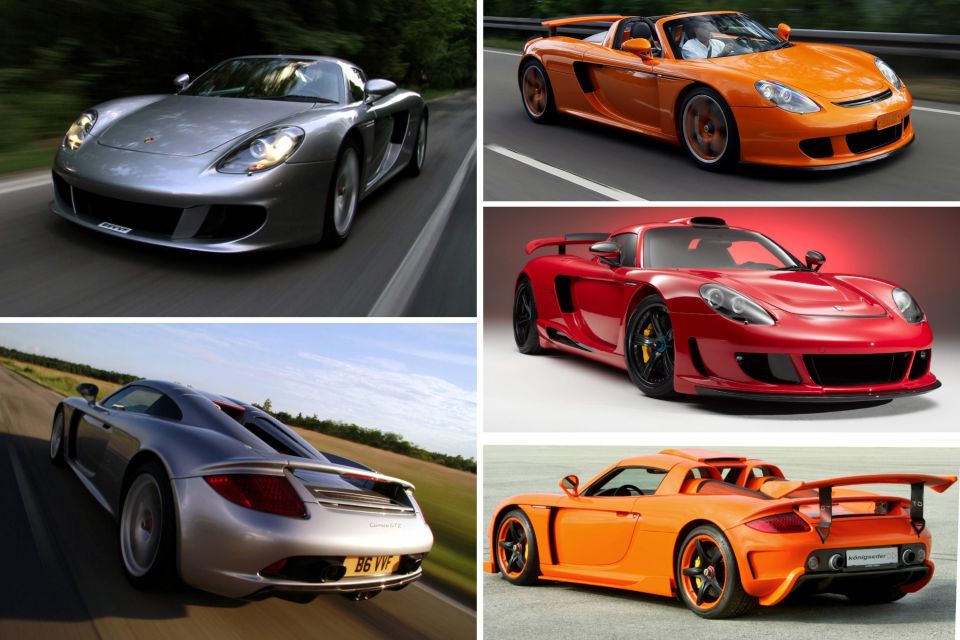
In 2013, Italian design house Zagato created the Carrera GTZ, a custom version of Porsche’s flagship featuring a number of design changes on the roof, rear deck, and bumpers.
The first car was commissioned Ernst Berg, a German rally driver, while another example was built in 2019 for Kris Singh, an American businessman and car collector. According to several sources, a total of six Carrera GTZs are in existence.
Over the years, several units of the Porsche Carrera GT have been subjected to visual and mechanical modifications by Gemballa – in the form of the extensively modified Mirage GT – and by tuners including Edo Competition, TechArt, 9ff, Koenigseder, and Kubatech.
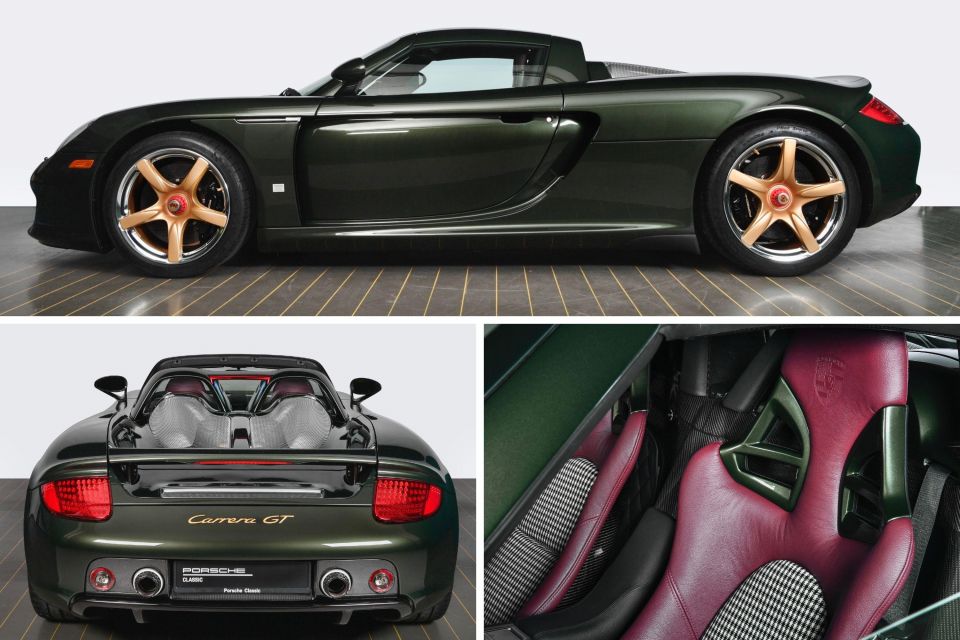

In 2019, Porsche Classic presented the Carrera GT “recommissioned”, a custom reconstruction of the supercar ordered by a client.
Besides the disassembly, refurbishment and replacement of its components, this unique Carrera GT also received a retro Oak Green Metallic paintwork, gold painted magnesium wheels with high gloss silver rim ring, and a marking on the top of its steering wheel.
More than 20 years have passed since the reveal of the Porsche Carrera GT as a concept car, but this magnificent piece of automotive history doesn’t cease to amaze and inspire. It’s the definition of a future classic, and a true poster car from the ‘00s that initiated a new generation of petrolheads.
As the last analogue supercar, the Porsche Carrera GT is a testament of the sheer joy of driving and will carry that title for many years to come.
Its timeless form-follows-function design combined with its exceptional build quality, motorsport origins and untamed character, justify a special place in the automotive pantheon, among legendary supercars like the Lamborghini Miura (1966), the Ferrari F40 (1987) and the McLaren F1 (1992).
MORE: Porsche news, reviews, comparisons and videos
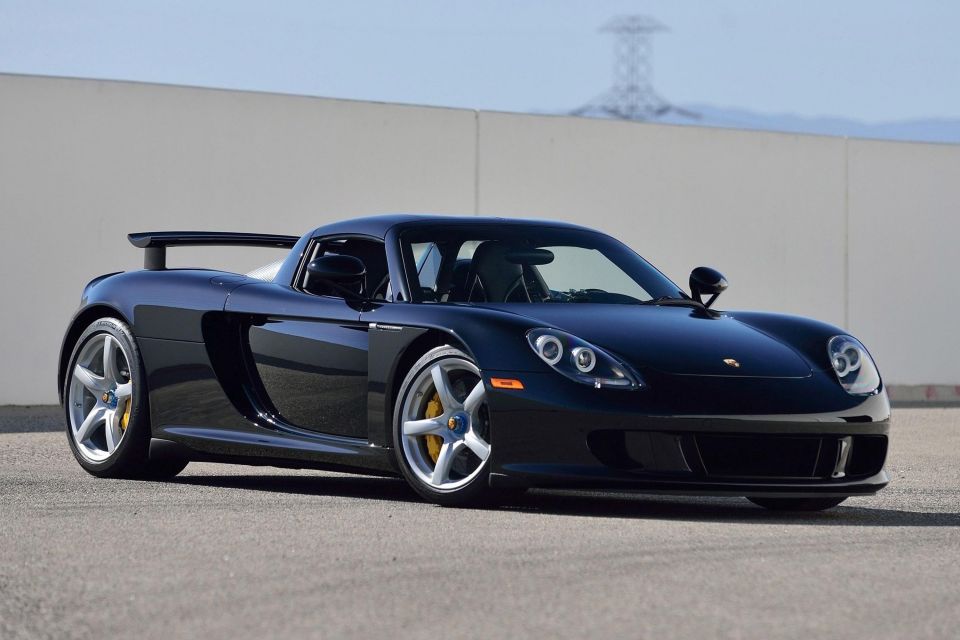
Where expert car reviews meet expert car buying – CarExpert gives you trusted advice, personalised service and real savings on your next new car.


Shane O'Donoghue
6 Days Ago


Anthony Crawford
5 Days Ago


Matt Campbell
4 Days Ago


James Wong
3 Days Ago


Max Davies
1 Day Ago


Josh Nevett
13 Hours Ago